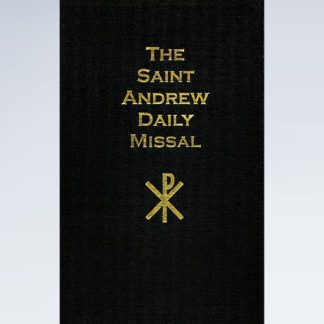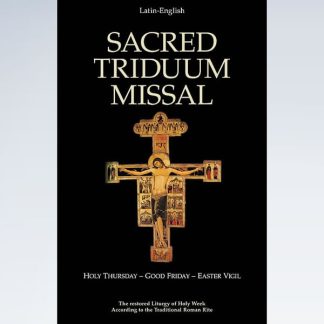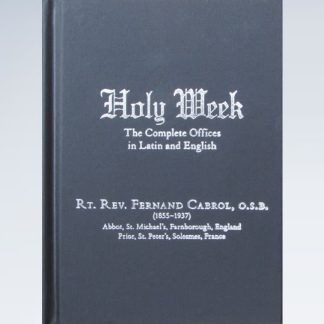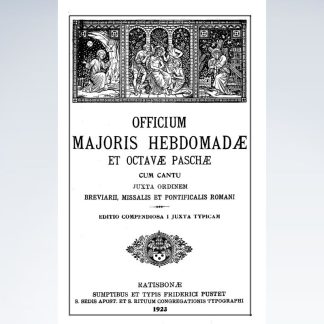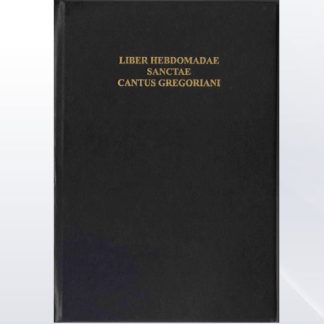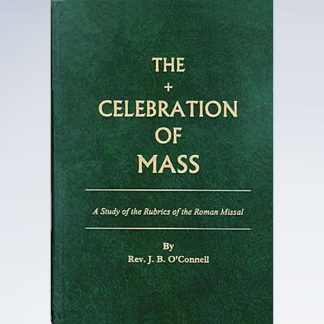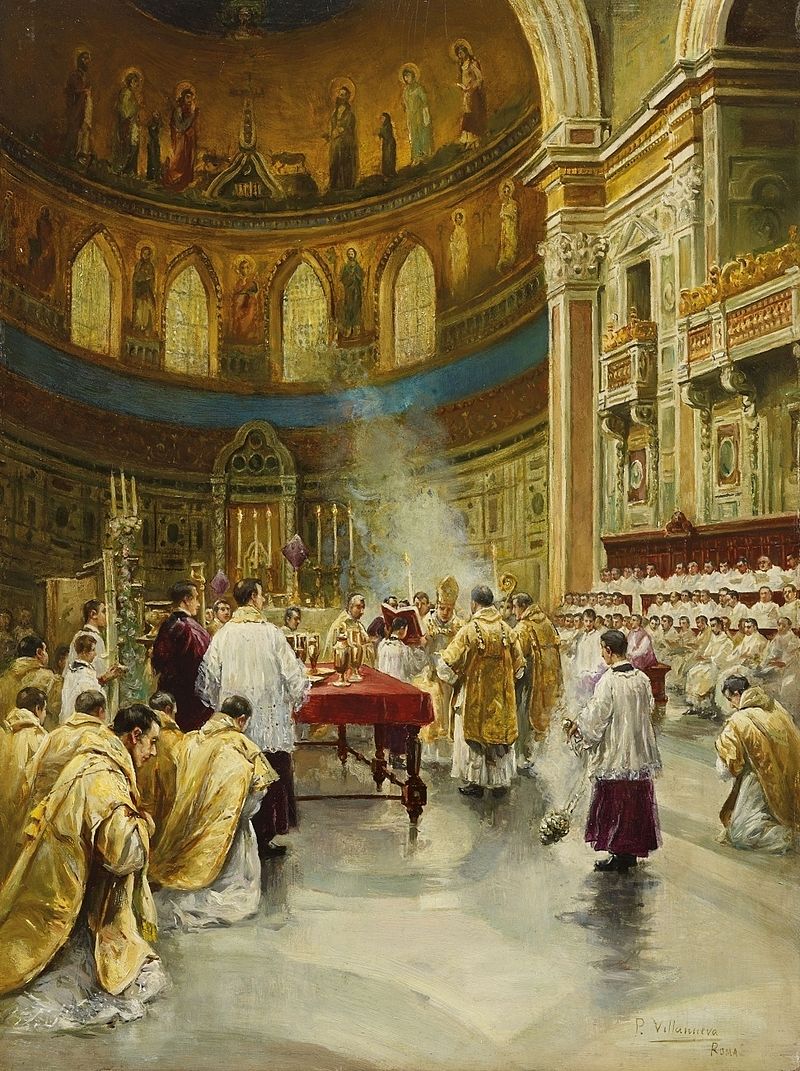

Station at St John Lateran
The Station is held at St. John Lateran, originally called the Basilica of Saint Saviour.
The Liturgy of Maundy Thursday is full of memories of the Redemption. It provided formerly for the celebration of three Masses: the first for the reconciliation of public Penitents, the second for the consecration of the holy oils, and the third for a special commemoration of the institution of the Holy Eucharist at the Last Supper. This last Mass is the only one that has been preserved, and at it the Bishop, attended by twelve Priests, seven Deacons and seven Subdeacons, blesses the holy oils in his Cathedral church.
Source: The Saint Andrew Daily Missal. Each Sunday Mass includes a commentary which ties in the Mass with the traditional breviary.
THE RECONCILIATION OF PUBLIC PENITENTS
Sinners who had undergone a course of penance were granted on this day “the abundant remission of their sins”, “which were washed away in the blood of Jesus”. Dying with Christ, they were “cleansed of all their sins, and clad in the nuptial robe they were admitted once more to the banquet of the Most Holy Supper”.
THE BLESSING OF THE HOLY OILS
This blessing took place with a view to the baptism and confirmation of the catechumens during Easter night. The bishop exorcised the oil, praying God “to instill into it the power of the Holy Ghost”, so that “the divine gifts might descend on those who were about to be anointed”. (Collects for Blessing of Holy Oil).
Before the prayer Per quem haec omnia there used to be a form of blessing of the good things of the earth, with mention of their different kinds (fruits, milk, honey, oil, etc.) of which we still find examples in the Leonine Sacramentary. Of this form there remains nothing in the Canon of the Mass except the conclusion, which on Holy Thursday retains its natural meaning, since it immediately follows the blessing of the holy oils.
The oil of the sick, which is the matter of the Sacrament of Extreme Unction, is the first to be blessed, before the Pater. Formerly this used also to be blessed on other days.
The Holy Chrism, which is the matter of the Sacrament of Confirmation, is the noblest of the holy oils, and the blessing of it takes place with greater pomp after the clergy have communicated. It is used for the consecration of bishops, in the rite of baptism, in the consecration of churches, altars and chalices, and in the baptism or blessing of bells.
The third holy oil, which is blessed immediately after, is that of the catechumens. It is used to anoint the breast and between the shoulders of the person to be baptized, for the blessing of baptismal fonts on Holy Saturday and on the Vigil of Pentecost, at the ordination of priests, at the consecration of altars and for the coronation of kings and queens.
“Oil”, says St. Augustine, “signifies something great.” Through the ages and in many a land it has always played a mystical and religious part. Soothing and restoring by its very nature, it symbolizes the healing wrought by the Holy Ghost (Extreme Unction); a source of light, it denotes the graces of the Holy Ghost which enlighten the heart; flowing and penetrating it represents the infusion of the Holy Spirit into souls (Baptism, Confirmation); softening in its effects, it shows forth the action of the Holy Ghost, who bends our rebellious wills and arms us against the enemies of our salvation. The Holy Ghost is especially represented by the olive oil, according to the Blessings of Oil and of Palms, because the dove, a symbol of the Holy Ghost carried an olive branch in her beak; because the Holy Ghost came down upon Christ the anointed One; and because the olive branches cast by the Jews in our Lord’s path foreshadowed the outpouring of the Holy Spirit which was to be given to the Apostles at Pentecost. The balm which is added to the oil to make the sacred Chrism signifies by its sweet perfume the good odour of all Christian virtues. Also it preserves from corruption; another respect in which it is a symbol of supernatural grace that protects us from the contagion of sin. (Catechism of the Council of Trent).
MASS FOR MAUNDY THURSDAY
The Church, which commemorates throughout the year in the Holy Eucharist all the mysteries of our Lord’s life, to-day lays special stress on the institution of that Sacrament and of the Priesthood. This Mass carries out more than any other the command of Christ to His priests to renew the Last Supper, during which He instituted His immortal presence among us at the very moment His death was being plotted. The Church, setting aside her mourning to-day, celebrates the Holy Sacrifice with joy. The crucifix is covered with a white veil, her ministers are vested in white, and the bells are rung at the Gloria in excelsis. They are not rung again until Holy Saturday.
St. Paul tells us in the Epistle that the Mass is a “memorial of the death of Christ”. The Sacrifice of the Altar is necessary if we are to partake in the Victim of Calvary and share in His merits. And the Eucharist, which derives all its virtue from the Sacrifice of the Cross, makes it universal as regards time and space in a sense unknown so far. To love the Blessed Sacrament is “to glory in the cross of our Lord Jesus Christ” (Introit). Christ takes on Himself to perform the ablutions prescribed by the Jews during the supper (Gospel), to show forth the purity and charity that God requires of those who desire to communicate for, as in the case of Judas (Collect), “whosoever eats this bread unworthily is guilty of the body and of the blood of the Lord ” (Epistle).
After the Mass the altar is stripped in order to show that the Holy Sacrifice is interrupted and will not be offered again to God until Holy Saturday. The priest therefore has consecrated two hosts, for on Good Friday the Church refrains from renewing on the altar the sacrifice of Calvary.
On this Holy Thursday, when the Epistle and Gospel describe for us the details of the institution of the priesthood and the Eucharistic sacrifice, let us receive from the priest’s hands that Holy Victim who offers Himself upon the altar, and in this holy manner fulfill our Easter duty.

-
The Saint Andrew Daily Missal 1945 Edition (Gold Edges)€77.77
-
Sacred Triduum Missal€14.23
-
Holy Week – The Complete Offices in Latin and English€33.19
-
Officium Majoris Hebdomadæ Et Octavæ Paschæ€23.71
-
Liber Hebdomadae Sanctae Cantus Gregoriani (Holy Week Gregorian Chant)€20.86
-
The Celebration of the Mass: A Study of the Rubrics of the Roman Missal€45.52
VIRGÓ SACRÁTA is a Christian mission-driven online resource and shop inspired from the beauty of Catholic faith, tradition, and arts. Our mission is to “Restore All Things to Christ!”, in continuing the legacy of Pope St. Pius X under the patronage of the Blessed Virgin Mary. “Who is she that cometh forth as the morning rising, fair as the moon, bright as the sun, terrible as an army set in battle array?” O Mary, conceived without sin, pray for us who have recourse to Thee.

